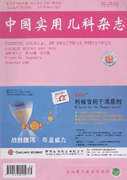Abstract: Objective To evaluate the role of interferon-γ release assays and Tuberculin Skin Test(TST)in diagnosis of pediatric tuberculosis. Methods We searched databases (PUBMED, MEDLINE, OVID,CNKI) between January 1990 and February 2011, performing manual searches of the references from relevant articles and corresponding with the authors of some articles for complete information. Results For QuantiFERON-TB Gold In-Tube, the pooled sensitivity was low in active tuberculosis, 67%(95%CI, 62%-72%)for sensitivity, 91%(95%CI, 86%-95%)for specificity.For T-SPOT.TB, the pooled sensitivity was 57%(95%CI, 53%-62%)and the pooled specificity was high, 88%(95%CI, 84%-91%).For TST, the pooled sensitivity and specificity were both low (70% vs 43%), especially in BCG vaccinated children(38%). Conclusion Sensitivities of the 3 tests are lower than those in adults, while IGRA is clinically useful to confirm or refute a positive TST result in children in areas with a high incidence of BCG vaccination or non tuberculous mycobacteria (NTM) infection where TST has low positive predictive value.

